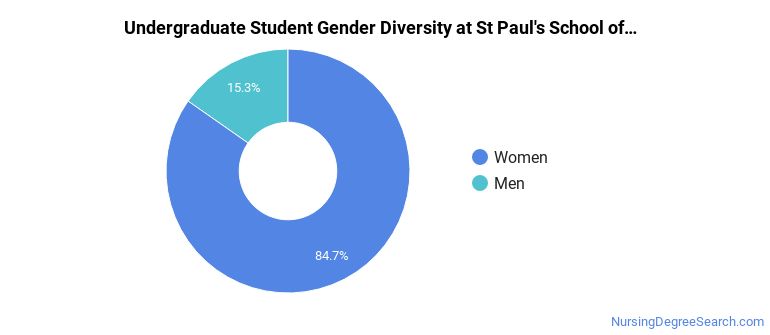St Paul’s School of Nursing - Staten Island Nursing Programs
Located in Staten Island, New York, St Paul's School of Nursing - Staten Island is a private for-profit institution. The surrounding area of the school is a good match for students who enjoy city life.
Where Is St Paul’s School of Nursing - Staten Island?

Contact details for St Paul's School of Nursing - Staten Island are given below.
| Contact Details | |
|---|---|
| Address: | 2 Teleport Drive, Corporate Commons Two, Suite 203, Staten Island, NY 10311 |
| Phone: | 718-517-7700 |
| Website: | www.stpaulsschoolofnursing.edu |
How Do I Get Into St Paul’s School of Nursing - Staten Island?
You can apply to St Paul’s School of Nursing - Staten Island online at: https://www.stpaulsschoolofnursing.edu/admissions.html
Can I Afford St Paul’s School of Nursing - Staten Island?
Student Loan Debt
It's not uncommon for college students to take out loans to pay for school. In fact, almost 66% of students nationwide depend at least partially on loans. At St Paul's School of Nursing - Staten Island, approximately 64% of students took out student loans averaging $8,303 a year. That adds up to $33,212 over four years for those students.
St Paul’s School of Nursing - Staten Island Undergraduate Student Diversity
Gender Diversity
Of the 746 full-time undergraduates at St Paul's School of Nursing - Staten Island, 15% are male and 85% are female.

Racial-Ethnic Diversity
The racial-ethnic breakdown of St Paul's School of Nursing - Staten Island students is as follows.

| Race/Ethnicity | Number of Grads |
|---|---|
| Asian | 30 |
| Black or African American | 239 |
| Hispanic or Latino | 120 |
| White | 266 |
| International Students | 1 |
| Other Races/Ethnicities | 90 |
St Paul’s School of Nursing - Staten Island Nursing Concentrations
The table below shows the number of awards for each concentration.
| Major | Associate’s | TOTAL |
|---|---|---|
| Registered Nursing | 189 | 189 |
| TOTAL | 189 | 189 |
References
*The racial-ethnic minorities count is calculated by taking the total number of students and subtracting white students, international students, and students whose race/ethnicity was unknown. This number is then divided by the total number of students at the school to obtain the racial-ethnic minorities percentage.
More about our data sources and methodologies.
